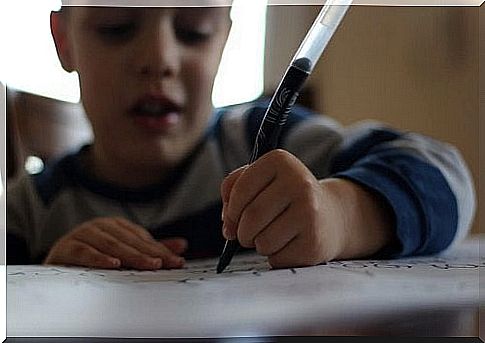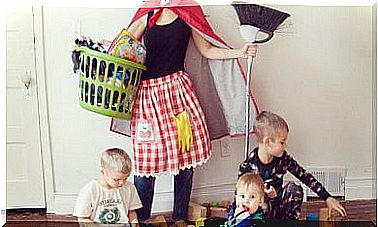Specular Writing In Children: What It Consists Of And Why It Occurs

Surely, the concept of specular writing will sound totally unfamiliar to you. However, it is something you see much more often than you think. This type of writing consists of tracing the letters in an inverted way, as if you were looking in a mirror.
The most common example of specular writing is that of ambulances. You will notice that the word ambulance is written backwards on the front of the vehicle. And this is entirely causal: it is written like this so that drivers who see it in the rearview mirror can read it and give way.
Specular writing also occurs very often in children. When they start to write, there are many little ones who draw the letters and numbers reversed (from right to left), for no apparent reason.
Causes of Specular Writing in Children
We can discriminate two major causes of mirror writing in children:
1.- Laterality problems
Typically, the mirror writing occurs more commonly in lefthanders. For this reason, specialists assure that it is given by a preponderance of a particular hemisphere of the brain. In the case of lefties, it is the right hemisphere.
In a world where everything seems to be right-handed, we need not worry that left-handed children develop this way of writing. It is simply something natural for them, according to their way of seeing the world and taking actions.
Logically, it is not something intentional. It’s just the brain’s way of telling them how to write. In fact, it would surely be very difficult for anyone to master this technique on purpose.

2.- Perception problems
Specular writing usually occurs between the ages of four and seven. This period of life coincides with the time when children develop the dominance of one hemisphere of the brain, which occurs between three and five years. This determines the laterality. That is, if you are right-handed or left-handed.
Finally, we must bear in mind that at that age the child is in the process of developing his perception and motor skills. That is, you may not yet be able to recognize all letter or word shapes. Or maybe I will but I can’t get it on paper.
Is there a relationship between mirror writing and dyslexia?
Yes, there is, but up to a point. Specular writing is often associated with children with dyslexia. However, it is not an exclusive symptom of this disorder. It can be just a phase of learning and then disappear.

What to do when a child speculates?
The normal thing in cases of specular writing in children is that it does not occur continuously and that it disappears after six years. If not, it is advisable to consult a professional to rule out its relationship with other visual, cognitive or perceptual disorders.
There are some simple activities that parents can practice with children with this problem. Here we explain some:
- First, identify exactly which symbols are difficult for you to memorize or draw.
- Make “paths to follow” with arrows for the child to visually incorporate the correct way to write numbers and letters.
- Draw hollow letters of preferably large size for the child to fill in or color them and confirm the correct apprehension of their shape.
- Draw a dotted line for the child to complete, following the correct direction of the letter or number.
- Finally, have him write the letter or number without visual aids. If you do it right, we can move on to the next one that has difficulties.
In addition, reading from an early age will help children to know the letters and, therefore, to recognize their shapes and senses. On the other hand, this will also lead to healthy study habits, expand your vocabulary, and improve your spelling.










